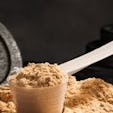Some exercises have such funny names you have to wonder if that’s what they’re really called, or if a trainer made those names up just to mess with you (or make his/her workout sound fancy and exotic). We’re talking about moves like the Turkish getup, Bulgarian split squat, skull crusher, and, of course, the good morning. Many people won’t immediately recognize those first three by name, but nearly everyone interested in bigger, stronger muscles (especially the glutes) knows the good morning—and some wish the introduction had never been made.
The good morning has been popular in bodybuilding and powerlifting circles forever, as it’s a tremendous exercise for the glutes, hamstrings, and lower back, and has the potential to add pounds to your squat and deadlift max. It can teach you to hinge at the hips and fire the muscles of your posterior in unison for better running, jumping, and overall explosiveness. But if you don’t respect it, you can end up with a back injury that plagues you for life—and that’s exactly what happened to the legendary Bruce Lee when he tried the good morning.
Here’s the ultimate guide to mastering this age-old lower-body builder for maximum safety and effectiveness.
What Are Good Mornings?
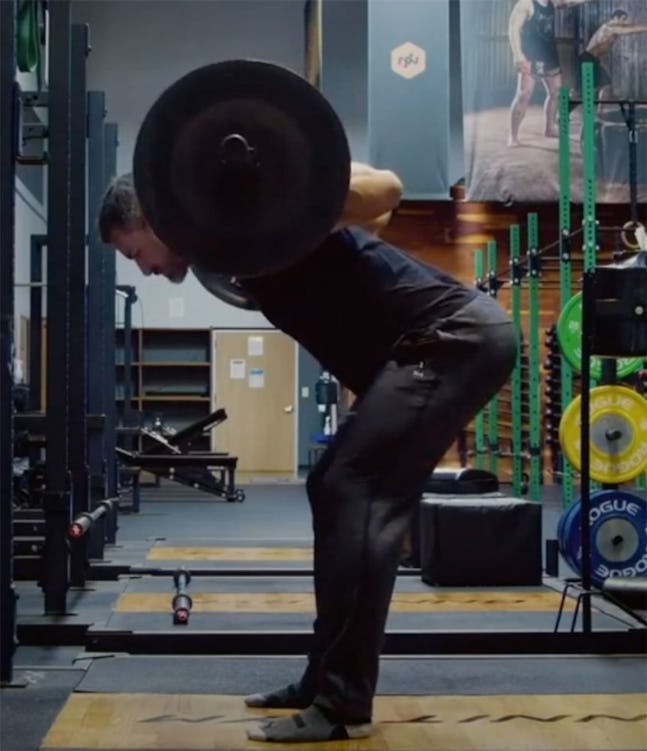
First, you need to understand what a hip hinge is. As LA trainer Ben Bruno (@benbrunotraining on Instagram) likes to explain it, a hinge is basically the movement you make when you have a boner in the morning and you have to pee: keeping a long spine, you bend your hips back, lowering your torso toward the floor. (For ladies reading this who may prefer a different, but no less crude analogy, imagine mooning a crowd.) That’s a hip hinge, and it’s a basic movement pattern we should all know how to do properly. Any time you pick something up from the floor, whether it’s a baby or a barbell, you’re hinging at the hips. The hip hinge is also necessary for jumping and other explosive movements, such as a power clean, and a football player couldn’t get into a three-point stance without one.
The good morning is a hip hinge in which external load is carried across the back of the shoulders. You hold a bar on your back and bend your hips as far as you can while keeping your head, spine, and pelvis aligned. (Alternatively, a band can be used, wrapped around the back of your neck and under your feet.) Legend has it that the good morning got its name because it looks like a stretch you’d perform as soon as you get out of bed. Imagine doing it without load, while yawning, and with arms reaching overhead, and you can kind of see why the name stuck.
Apart from where you hold the weight you’re lifting, a good morning really isn’t that different from other hip hinge movements like the Romanian deadlift or hip thrust. Holding the weight so far from your center of gravity makes the exercise less stable than these other examples, so you can’t go as heavy, and you have to be even more aware of your spine position throughout the lift. But on the plus side, the good morning seems to have more carryover to the back squat because its mechanics are so similar. It’s also a good alternative to the conventional deadlift, as it’s less stressful to the body as a whole, takes grip strength out of the equation, and allows you to perform more training volume. (You might only be able to handle one or two deadlift workouts per week without running into problems with recovery, but you could do several sets of good mornings throughout the week safely.)
What Muscles Do Good Mornings Work?
The good morning activates your body’s biggest muscles. To perform the hinge, the glutes and hamstrings have to work through a long range of motion. Stabilizing that motion are the back muscles—ranging from the rhomboids, teres major and minor, and lats, down to the spinal erectors—the core, including the quadratus lumborum, the deepest abdominal muscle and essential for good posture, and your calves.
Good mornings also have a way of training you to breathe and brace your core properly, says Kelly Starrett, DPT, creator of The Ready State and author of Becoming a Supple Leopard and Waterman 2.0. This can have much farther-reaching benefits than just giving you muscles you can see in the mirror. To prevent the weight from pulling your torso to the floor, you have to create stability by activating your diaphragm and taking air deep into your abdomen. (More on this under How To Correctly Perform a Good Morning below.) “This allows you to access the pelvic floor,” says Starrett, the muscles that control the bowels and bladder. Strengthening this area helps prevent medical problems like incontinence and pelvic floor prolapse. Yes, that means good mornings can play a role in keeping your guts where they belong—inside your body.
Are Good Mornings Effective?
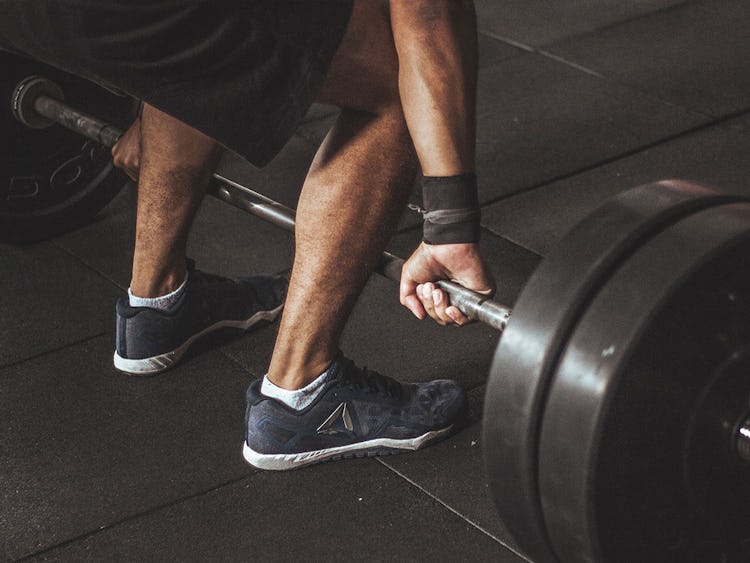
Just about every sport requires the ability to hip hinge, so good mornings are a useful exercise for athletes of every stripe. However, muscle-seekers and heavy lifters rely on them most.
They’re a favorite of bodybuilders who want to put more size on their glutes and hamstrings, and powerlifters who are striving to build their squat and deadlift. The good morning is particularly good for squatters, writes Bret Contreras, PhD, CSCS,*D, in his book Glute Lab, a guide to glute exercises. “The good morning helps reduce the risk of injury in a squat-gone-wrong situation, when the hips shoot up out of the bottom position, which is a common occurrence when squatting with maximal loads. Because the good morning mimics this exact movement pattern, the rationale is that the lifter strengthens the muscles used to carry out the movement, which might help prevent injuries if or when the fault occurs.”
Some Olympic weightlifters also use good mornings as an assistance lift for the clean and jerk and snatch. Barbell complexes, a form of conditioning circuit that’s grown out of weightlifting training, often feature the good morning. To do a complex, you perform several barbell exercises that feed into one another, all without putting the bar down. A complex could begin with five reps of the hang snatch, and then, since the bar finishes in an overhead position, go to an overhead squat for five reps. From there, the lifter can lower and press the weight behind the neck (five reps), and then lower it back to shoulder level, where he/she can finish the complex with five reps of good mornings. Used this way, one could argue that the good morning is an effective exercise for fat loss and cardio.
Finally, the good morning stretches the glutes and hamstrings at their end ranges of motion, making it highly valuable for improving hip flexion mobility. This is important for being able to squat, lunge, and crouch low, and access the full strength and power potential of these muscles.
“Good mornings might have started in modern weight rooms,” says Starrett, “but we see a similar pattern in practices like yoga’s sun salutation. People figured out a long time ago that you need to be able to hinge, extend the spine, and keep your hips, pelvis, and lumbar spine coordinated, organized, and stable. The good morning is a great expression of this notion.”
How To Stretch Before Doing Good Mornings
Perform the following mobility drills to prepare your body for the good morning. Do 5–10 reps for each.
Mountain Climber
Cat Cow
Mobile Table
How to Correctly Perform a Good Morning
If you’re new to the good morning, practice it with a PVC pipe, dowel, or broomstick before you use a barbell (yes, you can do this at home, if you like). The reason for this is twofold: the light weight of the stick will allow you to learn the mechanics of the movement with minimal injury risk, and its shape will provide you immediate tactile feedback on your form.
Position the stick vertically down your back (reach one arm behind your head and one behind your back to secure it), and try to maintain three points of contact with it throughout the exercise. The back of your head, your upper back, and butt should touch the stick at all times. When you can keep the stick against those three points, you know you’re keeping your head, spine, and pelvis aligned and neutral, which is critical for performing the good morning safely.
When you think you’ve got it down, move on to an empty barbell, and then load the bar gradually from there.
Step 1. Place a barbell in a power rack and grasp it with hands shoulder-width apart. Step under the bar and position it along the back of your shoulders. Draw your shoulders down and back (think: “proud chest”). Nudge the bar out of the rack, and step back, setting your feet hip-width apart. You can point your toes straight ahead, or turn them out slightly, to the 11 and 1 o’clock positions.
Step 2. Draw your ribs down, as if pulling them into your hips. Take a deep breath into your belly, trying to expand it 360 degrees. Now brace your core. You should feel very stable throughout your torso. Twist your feet into the floor so that you feel tension in your hips and the arches in your feet rise—keep this tension throughout the set. Focus your eyes on the floor a few feet in front of you.
Step 3. Soften your knees, and begin bending your hips back, lowering your torso toward the floor while keeping your head, spine, and pelvis in a straight line. Your lower back should be neutral—not excessively arched, and certainly not rounded over. Think about pulling your butt and hips straight backward. Continue hinging your hips until you feel a strong stretch in your hamstrings, or you think you can’t go any further without losing your stable spine position. Allow your knees to bend naturally.
Step 4. Squeeze your glutes as you reverse the motion and extend your hips to stand tall again.
As you get familiar with the movement, you can experiment with variations in your stance and grip. For an even greater glute and hamstring hit, you can perform good mornings with a wider stance, greater knee bend, and more toe flare. This better mimics the way most people squat, so it can have greater carryover to that exercise. You can also hold the bar higher up on your back—on your traps rather than the rear deltoids. Done with a narrower stance and less knee bend (as shown above), this version can help build your deadlift (assuming you deadlift with a conventional stance).
“If someone hasn’t done good mornings before, or we identify some technique errors, we regress back to a PVC pipe and see if they can perform 10 reps,” says Starrett. “Then we test again to make sure they’re breathing comfortably throughout the exercise. The next step is typically a regular 45-pound barbell, although some people find it easier to hold a light dumbbell behind their head as they hinge. This isn’t really about equipment or the muscles used—it’s about establishing sustainable motor patterns and testing their integrity.”
How To Fit Good Mornings Into Your Workout
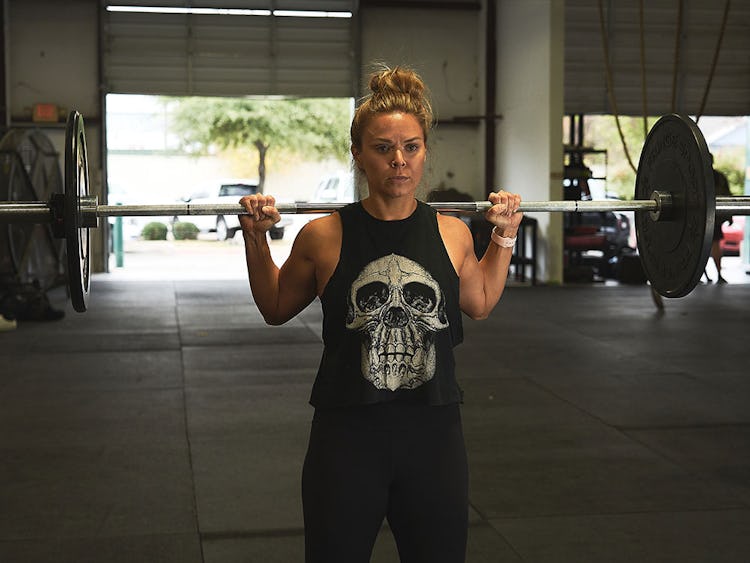
As mentioned above, good mornings work well as an assistance exercise for the back squat and conventional deadlift. You can perform them after you do one of those main lifts, or on a separate day elsewhere in your training week. In Glute Lab, Contreras recommends using 2–3 sets of 8–12 reps as a starting point.
Starrett says that he personally puts light good mornings at the start of a hip hinge-focused session, progressing from there to kettlebell swings or deadlifts. “The good morning can help groove the hip hinge pattern,” he says, “and also illustrates areas that are still sore from previous sessions and might need some mobility work after you’re done.” Starrett cautions that you don’t need to go very heavy on good mornings to see results, no matter where you choose to place them. “A couple sets of 10 with a light weight will still challenge you.” And whatever weight you use, work up to it slowly.
How to Prevent Good Mornings Causing Back Injuries

While the good morning is a safe exercise when done properly, many lifters have injured their lower backs performing it—including martial arts icon Bruce Lee. While reports vary, it seems that The Dragon was working out sometime in 1969, and skipped or rushed his warmup. Lee performed a good morning with around 135 pounds (approximately his bodyweight), and injured a sacral nerve. (No, he wasn’t kicked in the back by Wong Jack Man, as the movie Dragon: The Bruce Lee story posited.) After a long layoff, he was able to train again, but supposedly battled back pain for the rest of his life.
If Lee—a man who looked like he was built from coiled steel springs—can hurt himself doing good mornings, you can too. So take every precaution.
When people hurt their backs on the good morning, deadlift, or any other hip hinge, it’s often assumed that the spine went into unwanted flexion (you rounded your lower back), but Starrett states that improperly executed extension is more often to blame. That is, coming up out of the bottom of the movement too fast, or with too much of an arch.
“Go lighter and slower than your instinct tells you,” says Starrett. “Also, make sure you’re not going down too far—imagine reaching into a crib but not picking up your baby.”
If you have a history of lower back pain, the good morning may not be for you, at least until you’re sure the injury has healed. You can work on back extensions, Romanian deadlifts, and single-leg Romanian deadlifts in the meantime, and get a very similar training effect.
Another common mistake is to let your weight shift over your toes, says Starrett, “which, if overdone, can compromise your mechanics. Instead, make sure you apply pressure evenly throughout your feet for the duration of the movement, particularly when you start to hip hinge. This seems like a small thing, but will have a big impact on your lumbo-pelvic organization, and how well you’re able to maintain force production.”
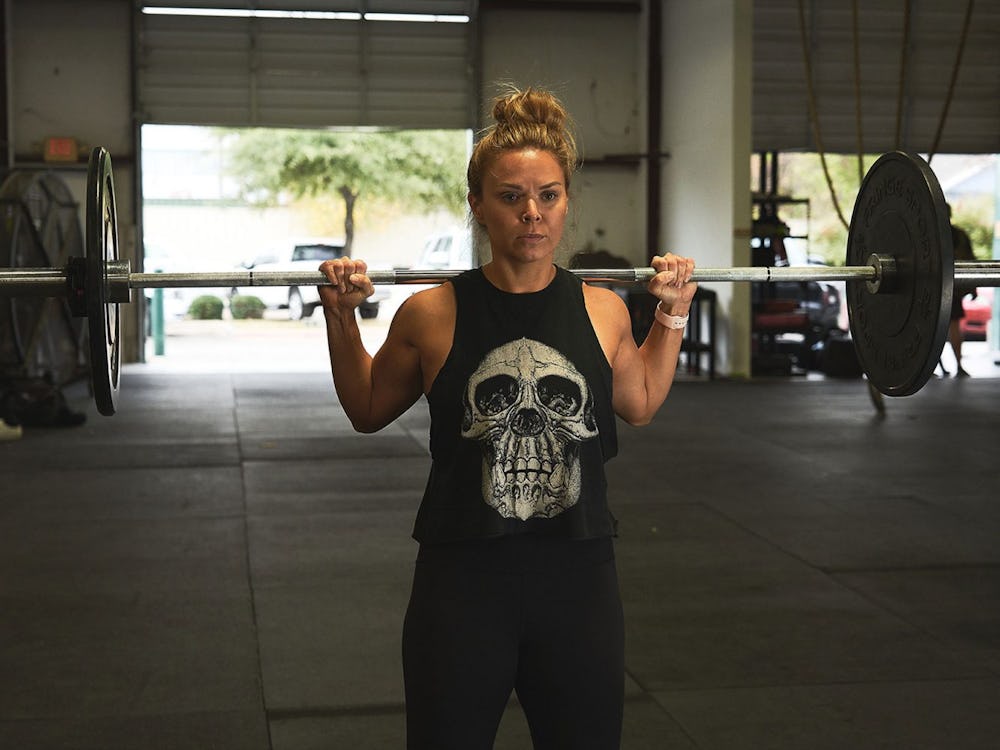
)


